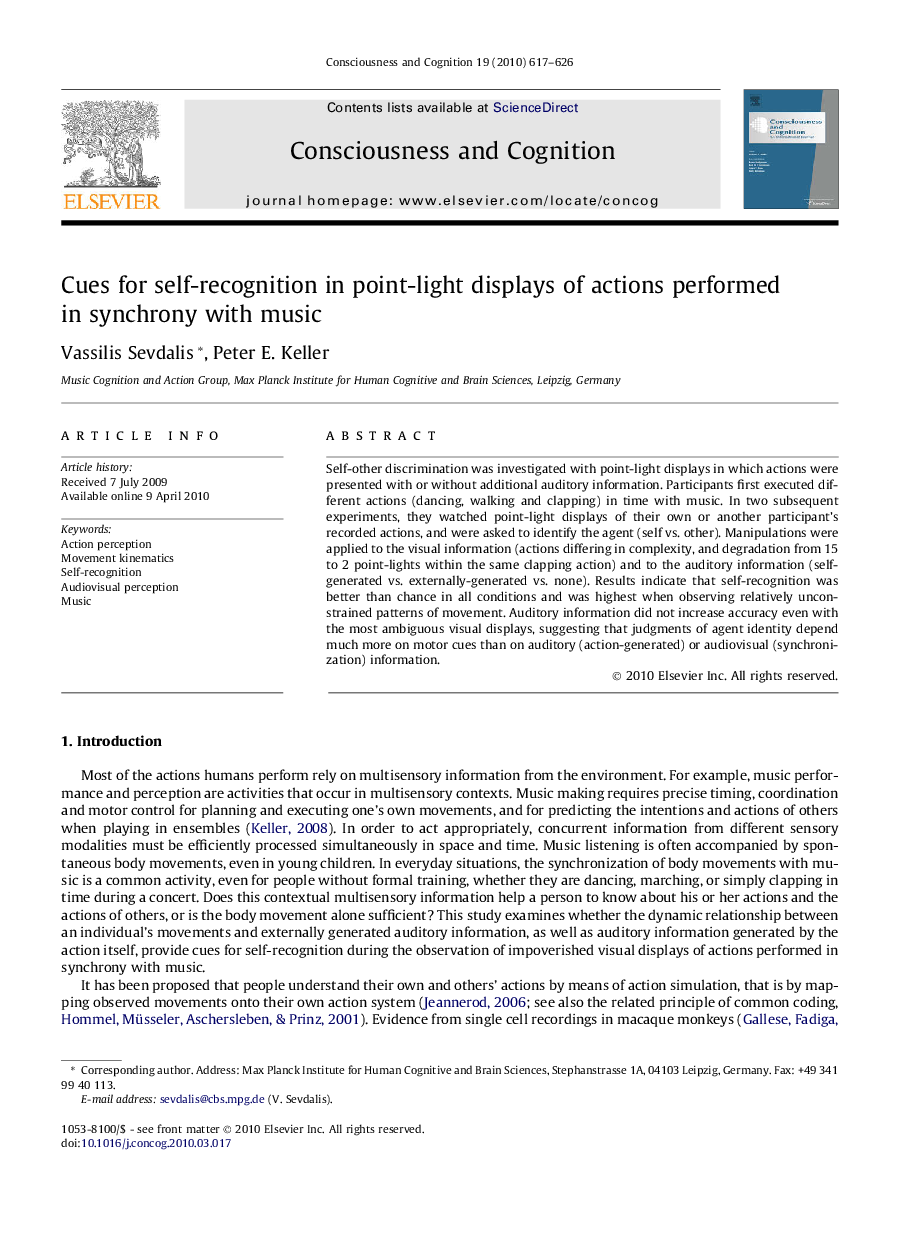| Article ID | Journal | Published Year | Pages | File Type |
|---|---|---|---|---|
| 927835 | Consciousness and Cognition | 2010 | 10 Pages |
Self–other discrimination was investigated with point-light displays in which actions were presented with or without additional auditory information. Participants first executed different actions (dancing, walking and clapping) in time with music. In two subsequent experiments, they watched point-light displays of their own or another participant’s recorded actions, and were asked to identify the agent (self vs. other). Manipulations were applied to the visual information (actions differing in complexity, and degradation from 15 to 2 point-lights within the same clapping action) and to the auditory information (self-generated vs. externally-generated vs. none). Results indicate that self-recognition was better than chance in all conditions and was highest when observing relatively unconstrained patterns of movement. Auditory information did not increase accuracy even with the most ambiguous visual displays, suggesting that judgments of agent identity depend much more on motor cues than on auditory (action-generated) or audiovisual (synchronization) information.
